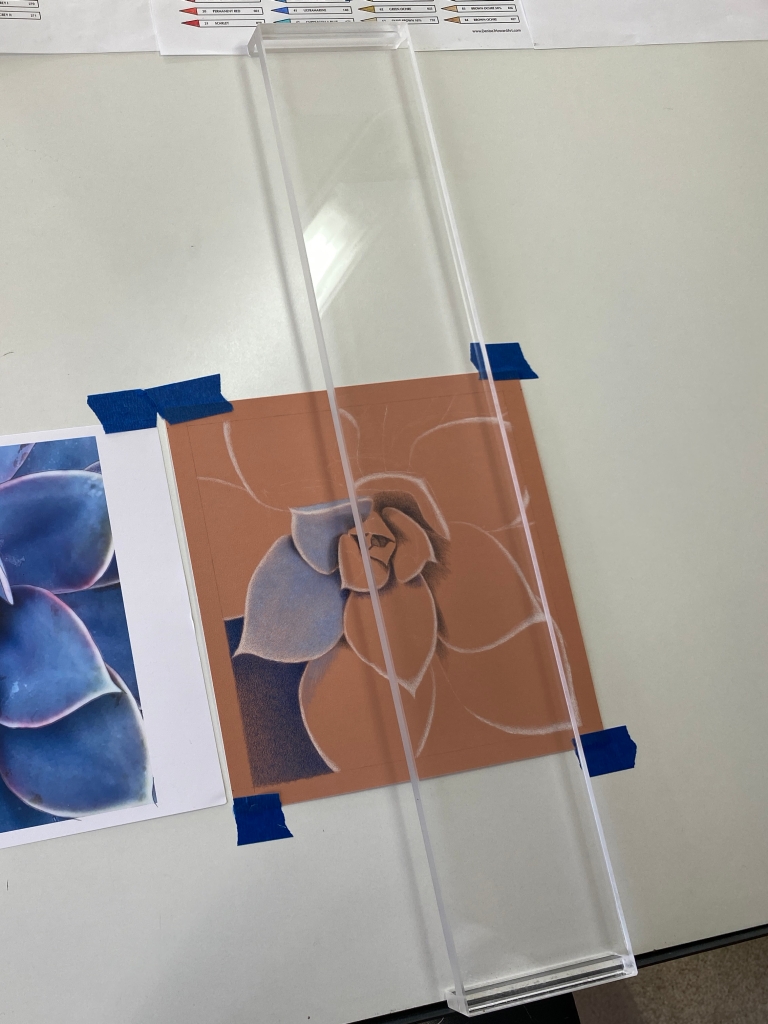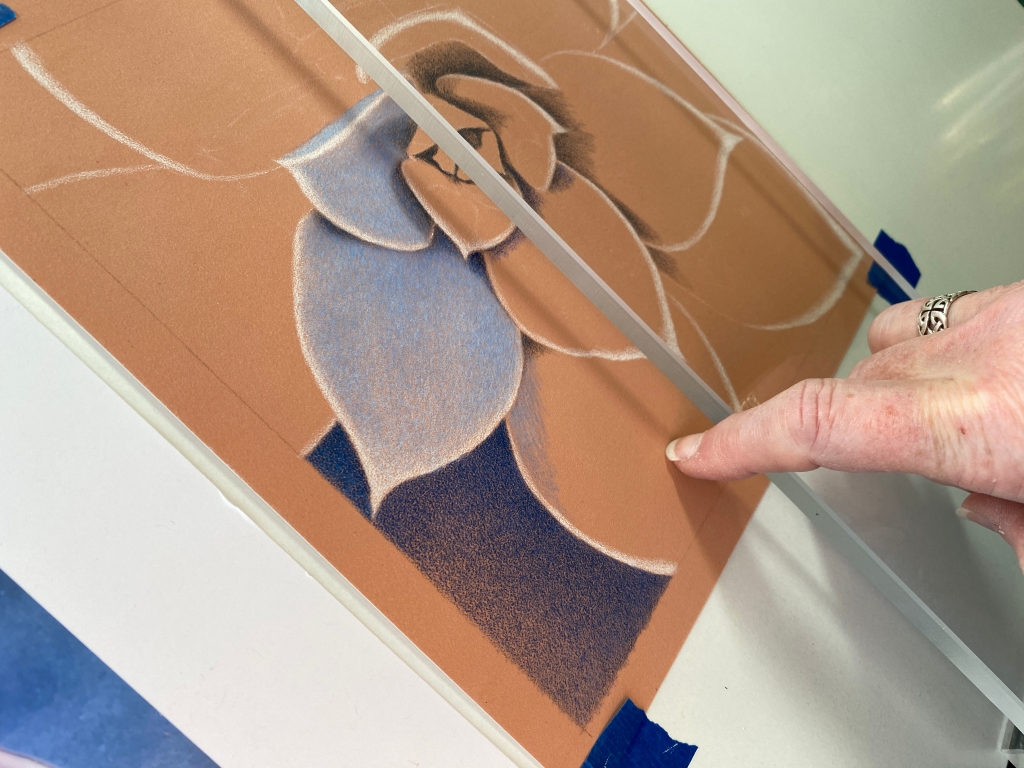Any artist who has ever worked with charcoal, graphite, or certain kinds of colored pencils on paper has experienced the heartbreak of smudges. Either the pigment gets on the heel of your hand while you’re working in one area and you don’t notice until there it is in a bad area, or a tiny amount of something else on your skin–dirt, oils, crumbs–directly affects the paper. You may or may not be able to fix it! Normally this can be prevented by keeping a sheet of paper like glassine under your drawing hand at all times.
A couple of months ago I was working on a drawing using Faber-Castell Polychromos pencils on Fabriano Artistico hot-pressed watercolor paper. This combination is a popular one for some artists working in colored pencil. It’s not my most favorite combo, but sometimes it’s the right one for a given project. However, this time it was giving me a big problem.
Despite keeping a sheet of glassine under my drawing hand, and despite always lifting it to move it rather than scooting it across the surface, the glassine–which normally is too slippery to pick up pigment–was nonetheless grabbing pigment and smudging it. I repeatedly had to stop and clean pigment off the surface of the glassine. Polychromos are drier and more powdery than some other brands, which does make them easier to smudge, but this was ridiculous! I found myself resorting to holding my drawing hand above the paper with my other hand. This wasn’t sustainable–it led to cramps in my shoulder and neck muscles. What to do?
Then I saw an ad for something called a “leaning bridge”–a long strip with very short legs for use on a flat or inclined surface. It’s a very similar idea to the “mahl stick” used by painters who work at an upright easel. One doesn’t really lean weight on it, it’s simply a place to rest and steady the hand. I was intrigued, but I balked at the price–over $50–and the height of the legs seemed too high to me because it was clearly designed more for someone holding paint brushes, maybe a watercolorist.
I’m fortunate to live near a TAP Plastics, so I took a picture of the thing to them and described what I wanted. The knowledgeable staff helped me choose the thickness and width of acrylic so that the strip wouldn’t sag under my hand. I told them how long to make it and how much clearance I wanted under it. The assistant manager came over to see what we were talking about and said “Wow, I wish I’d known about something like this when I was in art school!” Two days later, it was ready. For only about $30, they not only made it to my exact specs, they glued it together seamlessly and smoothed all the edges.
You might say “Why spend $30+ having this “leaning bridge” made out of acrylic when you could just glue together three pieces of wood, or three pieces of foam board?” It’s because 1) neither of those are as smooth as acrylic, 2) neither of those is transparent so that I can see everything under it, 3) wood would be too heavy at the size I wanted, and 4) foam board would have to be too thick to be stiff enough not to sag, which combined with the gap underneath would keep my hand too far from the surface.
I put it to use right away, and from the first minute, it’s been a total game-changer! I wish I’d had this thing years ago. It has made drawing easier by simply ensuring my hand is never in contact with the surface, with or without a sheet of glassine. I don’t have to spend any time being careful. It rests against the pencil ledge at the base of my drawing table and I slide it left and right as needed. It’s long enough to straddle paper of the largest size I work, with a little extra room. And it’s just high enough to provide a bit of gap even if I draw on a hard panel rather than paper.
Every artist who works at a table should have one of these!


Update 4/14/2023: Several people have told me I should make and market these. There are already commercially-available ones; for me it was a matter of their price and height from the surface. I did look into having a test run of them made by TAP Plastics, but the price break on a small quantity was so small I would go in the hole by the time I bought shipping boxes. So, here are the specs so you can have your own made by whatever local company is available to you.
It’s 3/8” thick acrylic, 22.75” long, 4” wide. The two legs are the same 3/8” thick acrylic, 1/2” long, 4” wide. The legs are glued *under* the ends of the big piece to provide 1/2” clearance underneath. Make sure to buff all the cut edges and bevel/round the bottoms of the legs so they won’t ever accidentally crease or cut the paper. This size is large enough to straddle a 21” sheet of paper with room to spare; if you don’t expect to ever work that large, you can specify a different length, just make sure to build some spare into it so it won’t ever sit on your paper.
